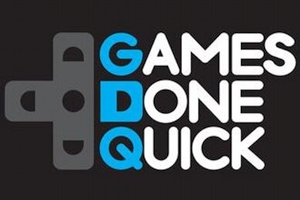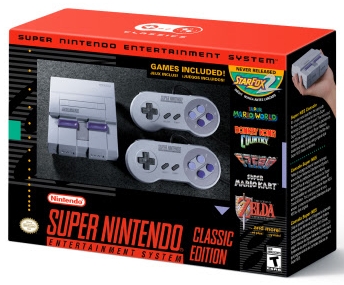Most Recent: Retro
The Video Game Canon: Pong

Dig deeper into the Video Game Canon with a look at the birth of Pong and asks why early game developers were so obsessed with recreating table tennis on our TVs. Here’s a teaser…
Why were early game developers so fixated on bouncing a ball back and forth?
It’s hard to pinpoint the very first video game, but it most likely belongs to A.S. Douglas and OXO. This electronic version of Tic-Tac-Toe was created by Douglas in 1952 to support his doctoral thesis, Interactions Between Human and Computer. But after that, the only question early gamemakers wanted to ask was, “Tennis, anyone?”
William Higinbotham was probably unfamiliar with OXO when he unleashed Tennis For Two on the world on October 18, 1958. Presented to the public during an open house at the Brookhaven National Laboratory, the game harnessed the pulses of an oscilloscope to give players the illusion of a playing field with a net in the center and a ball bouncing back and forth. Unlike Douglas, Higinbotham was trying to wow a crowd with the possibilities of science and add a little pizazz to the BNL’s normally staid event:
“The instruction book that came with the computer described how to plot trajectories and bouncing shapes, for research. I thought, ‘Hell, this would make a good game.’ It took me four hours to design one and a technician a couple of weeks to put it together. Everybody stood in line to play. The other exhibits were pretty static, obviously. The game seemed to me sort of an obvious thing.”
After the open house, Higinbotham’s invention was dismantled, and his status as a game development pioneer was forgotten… until the early 70s when he was dragged into the legal battle between Table Tennis and Pong.
Visit VideoGameCanon.com to continue reading this article and to explore the complete Top 1000.
The Video Game Canon: Mike Tyson’s Punch-Out!!

Dig deeper into the Video Game Canon with a look at how the real person at the center of Mike Tyson’s Punch-Out!! changed sports games and how Little Mac’s cartoonish opponents did as well. Here’s a teaser…
“They say I can’t lose. I say you can’t win!”
– Mike Tyson, to Little Mac, in 1987’s Mike Tyson’s Punch-Out!!
“There’s no one that can match me. My style is impetuous, my defense is impregnable, and I’m just ferocious. I want your heart! I want to eat his children!”
– Mike Tyson, about Lennox Lewis, in 2000
In the 13 years between those two quotes, Mike Tyson went from being the face of boxing (and Nintendo’s best-selling Mike Tyson’s Punch-Out!!) to becoming a punchline for late night comedians. In between, he was convicted of sexual assault in 1992 and bit off a part of Evander Holyfield’s ear in 1997.
From that moment on, Tyson would fit right in with the cartoon characters that made up the undercard to his eponymous game. After his retirement from the ring, Tyson would remake himself as something of a gentle giant, constantly tending to the pigeons he kept on the roof of his apartment building. His later decision to act in absurdist comedies like The Hangover and Mike Tyson Mysteries (an animated Scooby-Doo parody where Tyson is assisted by the ghost of the Marquess of Queensberry) just cemented it.
But the Mike Tyson of 1987 was cartoonish in a different way. The boxing prodigy known to the world as “Iron Mike” and “Kid Dynamite” demolished his opponents in ways that the sport hasn’t seen since. His first professional fight was over in less than two minutes. His next fight lasted a mere 52 seconds, while his fourth required only 39. And in 1986, Tyson knocked out Marvis Frazier in a little over 20 seconds, though an appeal changed the official time of the bout to 30 seconds.
“The Dream Fight” in Punch-Out!! was just as brutal. Tyson deals instant-knockdown uppercuts towards the game’s diminutive hero, Little Mac, for the first minute and a half of this epic boss battle. “Iron Mike” follows that up with a series of hooks that are so fast, it’s hard to keep up. In the second round, a series of ferocious jabs eventually give way to a wild combination of punches that are telegraphed by rapid-fire blinking. With bleary eyes and weary thumbs, hopefully you’ve figured out that the best strategy for fighting the champ is to just survive to the end of the third round and hope for a favorable decision.
Visit VideoGameCanon.com to continue reading this article and to explore the complete Top 1000.
Content Crash #8: The Retro Gaming Episode
Welcome everyone to the Content Crash podcast. I’m your host, Dan Hartnack. With me, as always, is Keno Eastmond.
Today’s episode is a more laid back and relaxed thing, and we’re going to talk about our past. Specifically, how we got into gaming and what games we played growing up. This is “The Retro Gaming Episode.”
You can subscribe to the Content Crash podcast on YouTube or SoundCloud.
Summer Games Done Quick 2017 raises more than $1.7 million for Doctors Without Borders
 Summer Games Done Quick, an annual speedrunning marathon that benefits Doctors Without Borders, closed the book on another successful event this weekend. According to the organizers (via Twitter), Summer Games Done Quick 2017 smashed all expectations and managed to raise a total of $1,760,400 for the charity. That figure easily beat last year’s total of $1,294,139, and the bar has definitely been raised for Awesome Games Done Quick 2018 in January.
Summer Games Done Quick, an annual speedrunning marathon that benefits Doctors Without Borders, closed the book on another successful event this weekend. According to the organizers (via Twitter), Summer Games Done Quick 2017 smashed all expectations and managed to raise a total of $1,760,400 for the charity. That figure easily beat last year’s total of $1,294,139, and the bar has definitely been raised for Awesome Games Done Quick 2018 in January.
We here at Warp Zoned want to give a hearty congratulations to all the runners who took part in Summer Games Done Quick 2017, and all the donors who helped make it such a success. And in case you missed out on some of the amazing runs, you can rewatch the entire marathon right now on YouTube.
Watch “The Mexican Runner” beat Battletoads in under 13 minutes for a new world record
Battletoads. Just saying the title surely conjures feelings of blissful nostalgia and controller-throwing rage in anyone over the age of 30. As a unique and interesting platformer from Rare, it was beloved by a generation of kids. But those same kids also hated it for its insane difficulty and less-than-perfect controls.
Personally, I think I’ve only advanced past the Turbo Tunnel just a handful of times, and the entire game beyond Level 4 is a complete mystery to me.
But this blind spot definitely doesn’t apply to Piotr Delgado “The Mexican Runner” Kusielczuk. Over the weekend, the speedrunner used a combination of warps and glitches to reach the of the game in 12 minutes and 45 seconds. This astonishing feat set a new world record for an “Any Percentage” run. Kusielczuk bested his own world record of 12:47, which was set less than a week ago.
In other speedrunning news, the annual Summer Games Done Quick marathon kicked off yesterday. The event benefits Doctors Without Borders and features some of the best speedrunners in the world.
Content Crash #3: Will New Games Always Cost $60?
Welcome everyone to the Content Crash podcast. I’m your host, Dan Hartnack, and with as always, Keno Eastmond.
Today’s topic… we’d like to talk about the pricing of games. The standard has forever been that a brand new AAA release comes out and it is $60. That happened way back in the 90s with Nintendo and the Super NES. And all the way to today, that number has not changed, for the most part.
But why is that? And will it ever change?
You can subscribe to the Content Crash podcast on YouTube or SoundCloud.
Super NES Classic coming September 29 with 21 games including never-before-released Star Fox 2
 Here we go again.
Here we go again.
Nintendo has announced they will release the Super NES Classic Edition microconsole on September 29. Priced at $79.99, the Super NES Classic Edition will include two controllers and 21 games, including the never-before-released Star Fox 2.
Star Fox 2 was originally scheduled to launch for the Super NES in 1995, but Nintendo cancelled it due to the then-upcoming launch of the Nintendo 64. The game was nearly complete at the time of its cancellation.
“While many people from around the world consider the Super NES to be one of the greatest video game systems ever made, many of our younger fans never had a chance to play it,” said Doug Bowser, Nintendo of America’s Senior Vice President of Sales and Marketing. “With the Super NES Classic Edition, new fans will be introduced to some of the best Nintendo games of all time, while longtime fans can relive some of their favorite retro classics with family and friends.”
While many Nintendo fans have likely already resigned themselves to never obtaining one, the Super NES Classic Edition lives up to its name with an absolute murderer’s row of titles. In addition to Star Fox 2, the microconsole will include Contra III: The Alien Wars, EarthBound, Super Metroid, Super Mario Kart, Final Fantasy III, and many more:
|
Games Included in Super NES Classic
|
Games Included in Super NES Classic
|
Let’s hope it’s easier to find than last year’s ultra-rare NES Classic Edition.
The Video Game Canon: Street Fighter II

Dig deeper into the Video Game Canon with a look at Hollywood’s influence on Street Fighter II (and it’s influence on Hollywood). Here’s a teaser…
Street Fighter II: The World Warrior wasn’t the first fighting game ever released, but it single-handedly helped shape the genre for decades to come.
Capcom’s masterpiece rose to prominence by replacing the small and stiff characters of previous fighting games (including its predecessor, 1987’s Street Fighter) with highly detailed characters that seemed to fly around the screen. Instead of generic fighters clad in traditional karategi uniforms, Street Fighter II starred a diverse group of characters with fantastical “special moves.” And young fans lined up around the block to do battle with “World Warriors” like E. Honda, a sumo wrestler with a lightning-quick Hundred Hand Slap; Zangief, a Russian giant who fought bears; Blanka, a green-skinned prince who controlled electricity; and Dhalsim, a yoga master who breathed fire.
Rather than rest on their laurels, Capcom refined Street Fighter II’s controls and added more characters to the select screen through the release of four subsequent revisions. This parade of improvements (and Street Fighter II’s eventual release on home consoles) helped ensure the game’s status as the biggest fighting game of the early 90s arcade renaissance. By the late 90s, a loosely-connected group of enthusiasts for Street Fighter II began building a “Fighting Game Community” online, which eventually grew to include organized tournaments (like the annual Evo gathering) and a dedicated fandom that could rival any professional sport.
Visit VideoGameCanon.com to continue reading this article and to explore the complete Top 1000.







